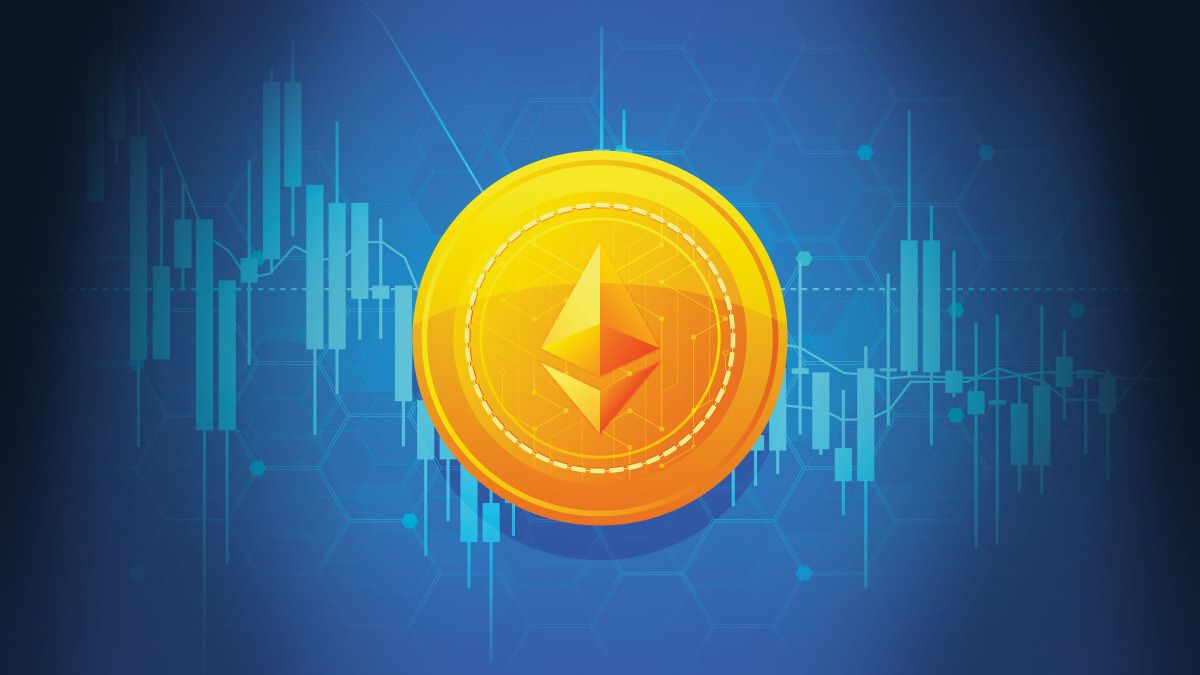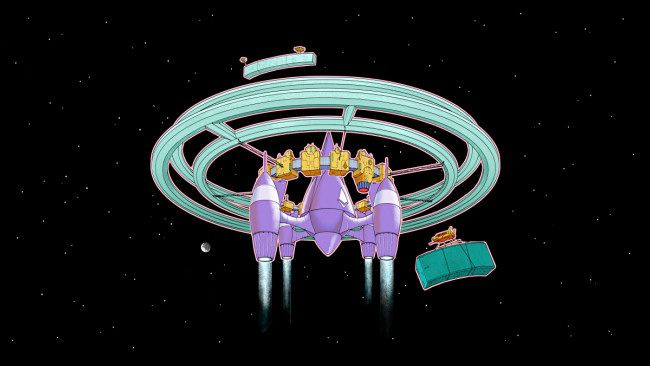Quick Links
The next major revision of the Ethereum crypto network, often called "ETH 2.0," promises to address some of its biggest criticisms, from high GPU prices to environmental pollution. Let's take a look at the proposed changes and what they might mean for the future of crypto.
What Is Ethereum 2.0, and When Will It Arrive?
Ethereum 2.0 is a commonly-used term that usually represents Ethereum's the highly-anticipated switchover from proof-of-work to proof-of-stake, which promises to make Ethereum mining disappear. As of January 24, 2022, the Ethereum Foundation no longer refers to this upgrade as "Eth2" or "Ethereum 2.0." Instead, the foundation is calling it "the merge" and "the docking."
As we'll explain below, the Ethereum network's reliance on computing power to provide consensus ("proof of work") has led to high GPU prices and criticism from environmentalists. These issues have taken on new urgency recently with the mainstream adoption of NFTs, many of which use Ethereum smart contracts to validate tokens that link to works of art. Transitioning to proof-of-stake, which will no longer require GPU mining, is expected to solve some of these problems.
The transition to Ethereum 2.0 has been promised for years, and the foundation now claims it will finally happen in the second quarter of 2022.
A Brief Refresher on Ethereum 1.0
If you're not too familiar with Ethereum, you can conceptualize it by imagining a giant, distributed virtual computer running on the internet. If you've ever used an emulator to run old MS-DOS games or virtualization to run Windows on a Mac, you've encountered a similar principle. In both cases, a programmable virtual computer was running as software (instead of hardware) on top of another platform.
Unlike a virtual machine running on a single PC, Ethereum is a distributed virtual machine made up of thousands of computers (called nodes) linked by a blockchain. These nodes can execute "smart contracts," which are programs that run on the Ethereum virtual computer. And since Ethereum is dynamic and distributed, the size of the virtual machine can shrink or grow at any time as nodes join or leave the network.
Payment in Ether (a cryptocurrency that runs as one of the applications on the Ethereum network) gives people the incentive to run these nodes and provide the computational power (known as "mining") to execute the smart contracts and verify the chronological order of transactions on the Ethereum blockchain. That verification process is called "consensus."
Problems With Ethereum Today
To understand the need for Ethereum's upgrade, you need to understand Ethereum's current drawbacks. Ethereum's architects and experts alike have pointed out a handful of main problems with how Ethereum works, and they generally regard these problems as standing in the way of wider growth of Ethereum applications. Here are a few key issues:
- High Gas Fees: "Gas" is what makes Ethereum network go. It's a fee paid to miners that provide the computational power to run the network. The gas price is a variable market price based on demand for resources on the Ethereum network. The higher the demand, the higher the gas fees. The more gas someone is willing to pay, the faster the transaction will be executed. That means when Ethereum applications soar in popularity, the gas price can get prohibitively expensive, sometimes costing more to execute a transaction than the value of the token being transacted. For example, at certain times, it might cost you more in gas fees to purchase a low-cost NFT than the price of the NFT itself.
- Power Usage: Currently, establishing consensus on the Ethereum blockchain is based on cryptographic puzzles that must be solved by nodes on the Ethereum network, which is called "proof of work." The more popular Ethereum gets, the more computational work is needed to verify its blockchain, which makes nodes on the network use more electricity. That, in turn, has inspired frequent criticism that running the Ethereum network generates pollution that damages our natural environment.
- Disk Space Usage: As the size of the Ethereum network grows, running a node becomes more difficult because the Ethereum blockchain history takes up more disk space. This limits who can run a full node (by increasing the price of running one), which then limits the number of nodes on the network.
- Network Congestion: In times of high computational demand, inefficiencies in how Ethereum works leads to network congestion in the communication between nodes, slowing down the execution of smart contracts. This congestion limits the complexity of the applications that can reasonably run on the Ethereum network.
- GPU Prices: Ethereum's consensus algorithm (called "Ethash") has been specially designed to be profitable to mine on consumer graphics cards. The higher the demand for computation on the Ethereum network, the more miners can get paid (in gas fees), which makes them want to buy more GPUs to make more money. In turn, this can spawn GPU shortages that make the price of graphics cards soar. High GPU prices have a dramatic impact on other applications of GPUs, such as gaming and neural networks.
The Proposed Solutions
The Ethereum Foundation and Ethereum creator Vitalik Buterin have known about some of the drawbacks listed above since Ethereum's inception in 2013 (and launch in 2015.) However, as the network grew in popularity, it has been difficult to implement upgrades and improvements. Changes to the network require at least 51% of Ethereum nodes to agree to them (if all nodes don't agree, the network forks, or splits, into multiple networks). Here's a look at what "the merge" and other upgrades will change to solve some of them.
Switching to Proof-of-Stake
After "the merge," Ethereum will no longer create consensus through proof-of-work, which required computational power and electricity from miners. Instead, it will utilize a proof-of-stake algorithm that requires validator nodes to risk (or "stake") a certain amount of Ether cryptocurrency to validate blocks on the Ethereum blockchain.
Validators will be chosen at random to create new blocks on the chain (verifying transactions and executing smart contracts.) If they disconnect mid-process or provide incorrect values, they can lose some or all of their staked Ether, which is where the risk comes in. The risk provides the incentive to do the right thing, and validators will still be paid for their work in Ether.
Under proof of stake, validators will still need to do some computation to create blocks in the Ethereum blockchain, but not nearly as much as when forced to solve cryptographic puzzles. That's why proof of stake is expected to dramatically reduce energy usage of the Ethereum network and lower barriers to entry (you won't need an expensive, beefy GPU to earn crypto as a validator.) It will also possibly lead to more nodes on the network since it will be easier to become part of a node pool. More nodes means more computing power and less centralization, which increases the security of the network.
Switching Ethereum to proof-of-stake is expected to ease demand on GPUs, although they might still be used to mine crypto as miners who formerly mined Ether adapt their existing mining hardware and methods to other cryptocurrencies. If GPU demand lowers, graphics card prices may fall somewhat, but there are other factors at play in the current graphics card shortage.
Switching Ethereum to proof of stake has been a multi-phase process that has already begun by instituting the Beacon Chain---a sort of parallel consensus layer based on staking Ether---which will eventually merge with the main Ethereum network. Hence the name "the merge."
The Adoption of Sharding
After "the merge," Ethereum's developers plan to introduce another major upgrade called "Sharding," which breaks up the main Ethereum blockchain into smaller chains called "shards."
Currently, the entire Ethereum blockchain history takes up 4 terabytes of space. Full nodes don't have to host this entire amount, but under the new plan, the active chain will be broken into 64 pieces, so each node will only have to host 1/64th the conventional size of the Ethereum blockchain.
Sharding is expected to lower the barriers to entry for running a node by lowering hardware requirements. That, in turn, might lead to more nodes, which allows the network to grow in capacity. Sharding will also increase the number of transactions the Ethereum network can process by spreading the load across more nodes, which might help to lower gas prices.
Sharding is expected to come to the Ethereum network some time in 2023, with no firm date planned yet.
Will Ethereum 2.0 Lower Gas Fees?
Since "Ethereum 2.0" now means different things and has been split into different goals rolling out over time, whether it will reduce gas fees is a difficult question to answer with confidence.
There is a lot of skepticism in the Ethereum community that the switch to proof of stake ("the merge") will lower gas fees, and the Ethereum foundation doesn't promise that it will. Gas prices are based on demand, and there is a finite amount of room in each Ethereum block for computation. Instead, sharding might reduce fees by increasing computational capacity of the Ethereum network, but that is not expected to come to the main Ethereum chain until at least 2023.
Instead, some experts expect that a reduction of Ethereum gas fees may have to come down to what are called "Layer 2" applications built on top of the Ethereum network, which will do some of their own independent computational work but rely on Ethereum for a fundamental level of consensus and verification.
Suffice to say, the entire issue of Ethereum's upgrades and their effects is complicated, and it's based around a set of dynamic conditions---including the size of the network, the value of Ether, the demand for NFTs, and the mood of the node operators---that can change wildly from day to day. Only time will tell how it will all play out and what effects Ethereum's changes will have on the broader world of crypto.
But if we had to guess, switching Ethereum to proof of stake is widely expected to be a groundbreaking move. If it is imitated by future cryptocurrencies, the switch might even remove barriers preventing some organizations or governments from fully embracing cryptocurrencies. That, in turn, could dramatically widen their adoption and make the future a very crypto-friendly place.



